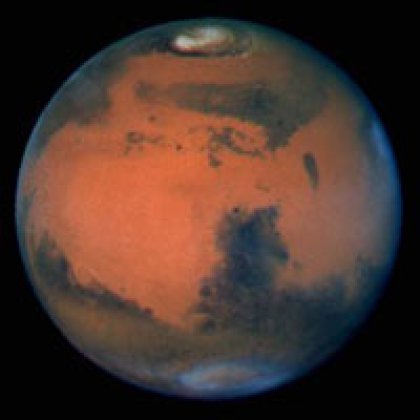
A free public lecture about the exploration of Mars will be held at The University of Queensland on Thursday, May 28.
Director of the Haughton-Mars Project, NASA Ames Research Center, California, Dr Pascal Lee will give the 2009 AIAA Distinguished Lecture, entitled: FROM EARTH TO MARS: Steps Towards The First Human Mission To The Red Planet.
The lecture is presented by the American Institute of Aeronautics & Astronautics (AIAA) and The University of Queensland.
All are welcome to the free public lecture, to be held at 5.30pm for a 6pm start on May 28 at the Raybould Lecture Theatre, Room 50-T203, Hawken Engineering Building, Cooper Road, University of Queensland, St Lucia.
Dr Lee will provide a fascinating insight into the cutting-edge technologies and exploration strategies being developed in preparation for the first human mission to the Red Planet.
He said the first human mission to Mars would likely be humanity's greatest undertaking in space exploration in the 21st century. As with all expeditions, its success would depend critically on preparation.
"The first steps towards a human journey to the Red Planet are already underway, as we continue to explore extreme environments on Earth and prepare for our return to the Moon," he said.
"Human journeys to near-Earth asteroids and to the moons of Mars, Phobos and Deimos, will also help pave the way. In time, humans will be ready for their first missions to the Red Planet."
Dr Lee will discuss progress being made around the world to achieve these milestones. He will examine the what, why, when, who, and how of a human mission to Mars.
About Dr Pascal Lee
Dr Pascal Lee is Chairman of the Mars Institute, a planetary scientist with the SETI Institute, and the Director of the Haughton-Mars Project at NASA Ames Research Center. He has worked extensively in the Arctic and Antarctica, viewed as "analogs" for the Moon and Mars. He first proposed the Cold Early Mars Model based on his geological field work in Earth’s polar regions. Dr Lee was recently scientist/pilot in the first field test of NASA’s new Lunar Electric Rover, a small pressurised rover concept currently under development for the return of humans to the Moon.
Map reference for the Hawken Building: Can be found at http://www.uq.edu.au/maps/pdf/StLuciaMap.pdf. The Hawken Engineering Building is #50 and is in grid reference I11.
For more information: Contact Mr Mark Bateup via mark.bateup2@dsto.defence.gov.au, Professor Michael Smart via m.smart@uq.edu.au or visit http://www.aiaa.org/portal/sydney
This event is part of a national lecture tour organised by the AIAA Sydney Section with funding through the AIAA Distinguished Lecturer Program. For more information visit http://www.aiaa.org/portal/sydney.
This event is also kindly supported by The University of Queensland.
Media: Jan King 07 3365 1120




